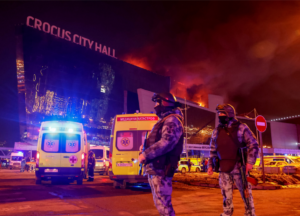Human Dignity and Homelessness in the District
By Franchetta Groves
Time after time, Washington, D.C. finds itself on the list of cities with one of the highest homeless populations. When walking down the streets, it will not take long to come across an individual who is struggling with homelessness, asking for help.
It is not just an anecdotal situation; statistics show that the D.C. area has an alarmingly high homelessness rate and that this problem is one which demands to be addressed. The annual report from Point in Time (PIT) found in 2019 that there were 9,794 individuals living homeless on the streets of Washington, D.C. What is the cause of homelessness? Why does D.C. face such a crisis and what can we do to help alleviate these peoples’ suffering?
Some look to rising housing costs and the lack of the government safety net to try and catch these individuals who are struggling. Others look toward the factors that lead to someone living on the streets. Mental health, domestic violence, drug and alcohol abuse, and the rise in single motherhood have all been attributed as factors to this problem.
All of these are factors leading to the problems at hand; Only 21% of homeless adults are employed due to a higher rate of mental health problems, addiction, and various health problems.
However, there is hope for those who need help to overcome their situation: Homelessness on the whole is on the decrease and fell by 7 percent from 2018, according to the study done by PIT. The report found that one of the biggest barriers is the lack of affordable housing in the D.C. area. With rising housing costs and wages not rising at the same rate, it can be challenging for individuals to afford to live in the city.
This problem has been recognized, however, and the different methods used to assist those facing trouble finding a home have improved and adapted to this change. Now programs are focused more so on long term recovery as opposed to the previous emergency shelter model. Transitional models, rapid re-housing, and permanent housing facilities are now being offered at an as-need basis so individuals can get help that suits them on a situational basis.
Even here on Catholic’s campus, there are so many different groups trying to make a positive difference. Groups such as So Others May Eat (S.O.M.E) help those in the city of D.C. by providing food, clothing, and health care. Students and faculty also participate in Homeless Food Runs, where they are able to talk to those who are struggling with homelessness.
Harrison Hanvey works as Assistant Campus Minister for Community Service, and through this role has had first hand experience seeing the impact homelessness has on the city and the community. He has also seen how the lack of affordable housing has played a major factor in the homelessness rate.
Yet, Hanvey has also seen how we can learn so much from those who have lived through hardships that we have not known. From Harrison’s perspective it is vital that we remember the human dignity that each person possesses because it is only then that we can overcome the barriers that divide us.
While the issue of homelessness may never be completely eradicated, the first step towards addressing the problem is acknowledging it in the first place and getting involved when we can. Studies such as the one done by Point in Time are the first step towards shining light on the problem which D.C. faces. Once informed, we can then properly begin to provide adequate resources needed to give individuals another shot at life.







